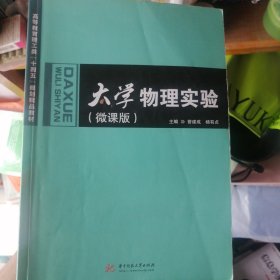
会计英语(通用版)
¥ 6.5 1.2折 ¥ 56 九五品
仅1件
宁夏银川
认证卖家担保交易快速发货售后保障
作者叶建芳、孙红星、叶建平 编
出版社上海财经大学出版社
出版时间2016-07
版次1
装帧平装
上书时间2023-08-30
- 在售商品 暂无
- 平均发货时间 4小时
- 好评率 暂无
- 最新上架
商品详情
- 品相描述:九五品
图书标准信息
- 作者 叶建芳、孙红星、叶建平 编
- 出版社 上海财经大学出版社
- 出版时间 2016-07
- 版次 1
- ISBN 9787564224455
- 定价 56.00元
- 装帧 平装
- 开本 16开
- 纸张 胶版纸
- 页数 390页
- 字数 600千字
- 【内容简介】
- 《“十二五”普通高等教育本科国家级规划教材·普通高等教育“十一五”国家级规划教材·上海财经大学精品课程系列教材:会计英语(通用版)》根据2014年财政部发布的三个新的具体准则和修订的五个准则进行编写。《“十二五”普通高等教育本科国家级规划教材·普通高等教育“十一五”国家级规划教材·上海财经大学精品课程系列教材:会计英语(通用版)》新增的内容涉及《企业会计准则第2号——长期股权投资》《企业会计准则第9号——职工薪酬准则》《企业会计准则第30号——财务报表列报》等准则。会计学原理已经是工具,特别对于管理人员来讲,它是必备的基础知识。目前中国经济全球化发展已是必然的趋势,这不单是大量跨国公司进驻中国,更多的是大量的中国企业走向世界,英语作为通行的语言,必然要求更多的中国学生学习与熟悉国际财务准则。会计英语已经成为会计专业的必修课程以及更多的经管专业的辅修课程了。
- 【目录】
-
1 An Introduction to Accounting
1.1 Accounting is an Information System
1.2 Forms of Organization
1.3 The Framework for the Preparation and Presentation of Financial Statements
Introducing componen,ts of the Framework
1.4 Understanding of Financial Statements
Statement of Financial Position,(Balan,ce Sheet)
Statement of Comprehensive Income(Income Statement)
Statement of Changes in, Owner's Equity/Statement of Retained Earnings
Statement of Cash Flows
1.5 Accounting and its Profession
1.6 Accounting Elements and Using the Accounting Equation
What is Accounting Equation?
Effects of Transactions on the Accounting Equation
1.7 Ethics in Accounting
Some Basic Ethical Standards
Demonstration Problem
Vocabulary
Self—Test Questions
Discussion Questions
Exercises
Problems
Mini—Case
2 Recording Transactions
2.1 Economic Events and Business Documents
2.2 T Accounts and Debit & Credit
Types of Accounts
Chart of Accounts and Ledger
The Accoun,tin,g Equation and the Rules of Debits and Credits
Normal Balances
2.3 Journalizing and Posting Transactions
Journalizing Transactions
Posting Transactions
2.4 Preparing a Trial Balance
Trial Balance
Locating and Correcting Errors
Formatting Conventions
2.5 Practices in China
Receipt Vouchers
Payment Vouchers
Transfer Vouchers
2.6 Using the Information—the Debt Ratio
Demonstration Problem
Vocabulary
Self—Test Questions
Discussion Questions
Exercises
Problems
Mini—Case
3 Adjusting the Accounts, Preparing the Statements, and Completing the Accounting Cycle
3.1 The Need for Adjustments
Time Period Principle
Need for Adjustments at the End of an Accounting Period
Accrual and Cash Basis of Accounting
3.2 Adjusting the Accounts
Prepaid Expenses
Depreciation
Unearned Revenues
Accrued Expenses
Accrued Revenues
3.3 Adjusted Trial Balance and Preparation of Financial Statements
3.4 Using the Worksheet
Purpose of the Worksheet
Preparing Worksheets
3.5 Closing Entries
Purpose of Closing Entries
Preparing the Closing Entries
3.6 Post—closing Trial Balance
3.7.The Accounting Cycle
3.8 Practices in China
3.9 Classification of Balance Sheetltems
Assets
Liabilities
Owner's Equity
3.10 Using the Information—the Current Ratio
Demonstration Problem
Vocabulary
Self—Test Questions
Discussion Questions
Exercises
Problems
Mini—Case
4 Accounting for Cash, Trading Securities and Receivables
4.1 Cash, Cash Equivalents, and Liquidity
4.2 Internal Control over Cash
Purposes and Broad Principles of Internal Control Procedures
The Characteristics of an Effective System of Internal Control
Internal Control for Cash
4.3 The Petty Cash Fund
Establishing the Fund
Making Petty Cash Payments
Reimbursing the Fund
4.4 Reconciling the Bank Balance
Bank Statement
Need for Reconciling the Bank Balance
Steps in, Reconciling the Bank Balance
4.5 Trading Securities
Accounting for Trading Securities
Balance Sheet Presentation
4.6 Credit Sales and Bad Debts
Design, Internal Controls for Receivables
Allowance Method of Accounting for Bad Debts
Writing off a Bad Debt
Bad Debt Recoveries
Estimating the Amount of Bad Debt Expense
Direct Write—Off Method of Accounting for Bad Debts
Credit Card Sales
4.7 Promissory Notes
Recording Receipt and Collection, of a Note
Dishonored Notes Receivable
Discounting Notes Receivable
Recording the Discounting of Notes Receivable
Contingent Liability and the Full Disclosure Principle
4.8 Converting Receivable into Cash
Selting Accounts Receivable
Pledging Accounts Receivable
4.9 Using the Information—Accounts Receivable Turnover
Demonstration Problem
Vocabulary
Self—Test Questions
Discussion Questions
Exercises
Problems
Mini—Case
5 Inventories and Cost of Goods Sold
5.1 Cost to Be Included in Inventories
What Is Inventory
Who Owns the Inventory
5.2 Inventory Systems
5.3 Purchase,Discount,Return & Allowance
Merchandise Purchases—Perpetual Inventory System
Purchase Retums and Allowances
Trade Discounts
Purchase Discounts
5.4 Inventory Cost Flow Assumptions
Periodic Inventory System
Perpetual Inventory System
Consistency in the Application of Inventory Valuation Procedures
5.5 Revenue from Sales and Cost of Goods Sold—Perpetual Inventory System
Sales Retums and Allowances
Sales Discounts
Shrinkage
5.6 Inventory Errors
5.7 Valuation Using Lower of Cost or Market (LCM) Method
5.8 Inventory Estimation Method
5.9 Disclose Information of Inventory in Financial Statements
5.10 Analysis the Information—Merchandise Turnover
Demonstration Problem
Vocabulary
Self—Test Questions
Discussion Questions
Exercises
Problems
Mini—Case
……
6 Long—Term Assets: Investments, Fixed Assets, Natural Resources and Intangible Assets
7 Current and Long—Term Liabilities
8 Owner's Equity
9 Statement of Cash Flows
Appendix 1:Balance Sheet
Appendix 2:Profit and Loss Account
Appendix 3:Future Value of $ 1
Appendix 4:Present Value of $ 1
Appendix 5:Present Value of Annuity of $ 1
Appendix 6:Future Value of Annuity of $ 1
Appendix 7:Solution of Exercises and Problems
点击展开
点击收起
— 没有更多了 —












以下为对购买帮助不大的评价